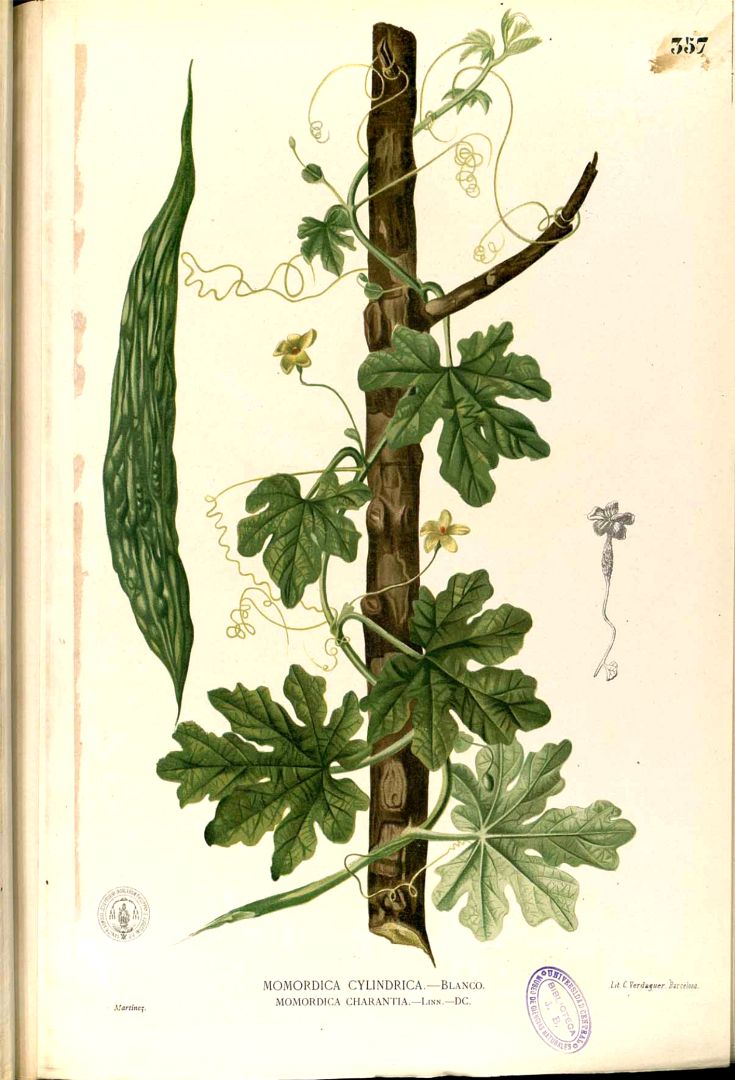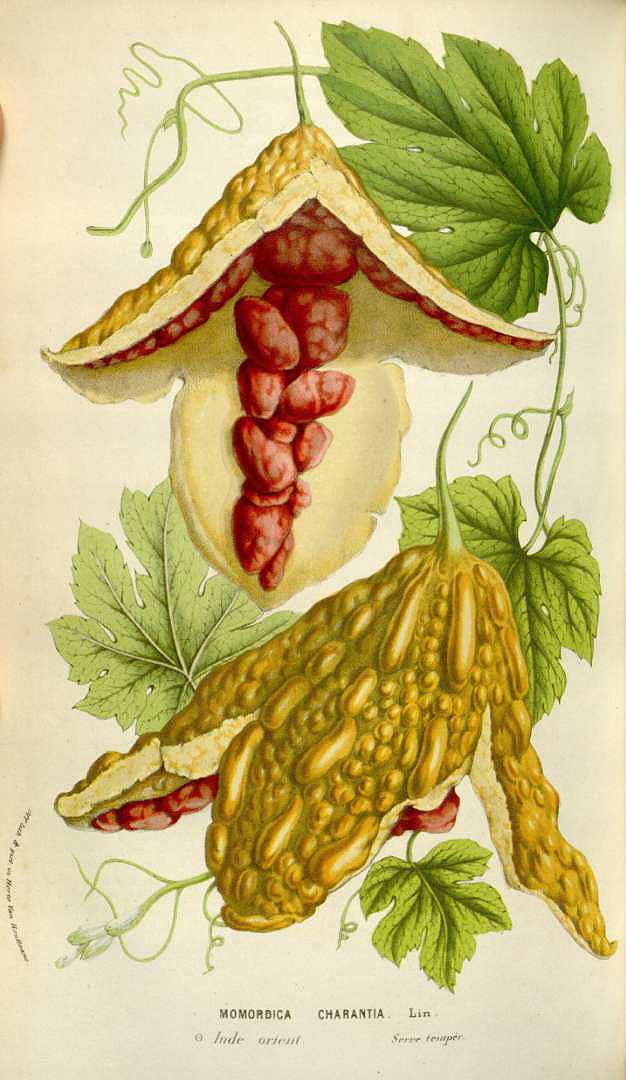! Nouveau site ici !
Vita > Plantae > Magnoliophyta > Magnoliopsida > Violales >
Cucurbitaceae > Momordica
Momordica charantia
(Margose à piquants)



Vita > Plantae > Magnoliophyta > Magnoliopsida > Violales >
Cucurbitaceae > Momordica
Momordica charantia
(Margose à piquants)

0°C
Plante grimpante de la famille des cucurbitacées, cultivée comme potagère pour ses fruits ressemblant à des concombres verruqueux
⬀
Le  donne accès au menu
donne accès au menu (c'est votre point de repère) 😊 ;
En dessous vous avez la classification, à partir de la vie (Vita, premier rang) jusqu'à la classe au dessus de la plante, dont vous trouvez ensuite le nom scientifique/botanique (latin) puis le nom commun (français), le cas échéant ;
C'est aussi un lien vers la fiche complète (tout comme la ✖, en bas à droite, et le +, en dessous de la description) ;
Vient alors l'illustration (ou ce qui la remplace, en attendant), la comestibilité :
Et en bas
⬂





